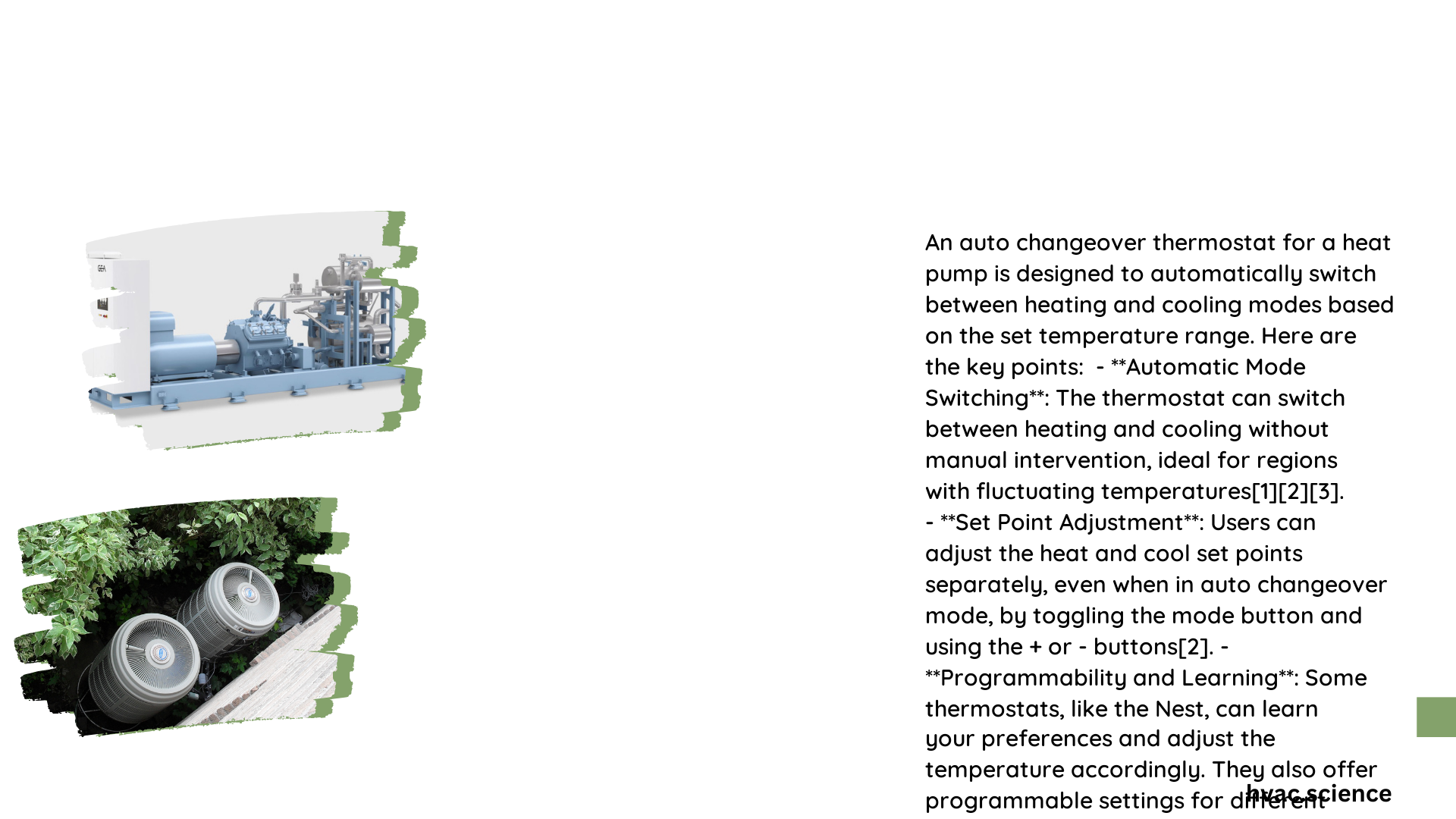An auto changeover thermostat for heat pump represents a sophisticated climate control solution that automatically switches between heating and cooling modes based on precise temperature settings. This intelligent device optimizes home comfort by seamlessly transitioning between temperature ranges, reducing energy consumption, and providing consistent indoor climate management without manual intervention.
What Makes Auto Changeover Thermostat Essential for Heat Pump Systems?
Why Choose Auto Changeover Technology?
Auto changeover thermostats offer unparalleled flexibility in temperature management for heat pump systems. Unlike traditional thermostats, these advanced devices:
- Automatically switch between heating and cooling modes
- Maintain precise temperature control
- Reduce energy consumption
- Minimize manual temperature adjustments
How Does Auto Changeover Functionality Work?
The auto changeover mechanism operates through a sophisticated algorithm that:
- Monitors indoor temperature continuously
- Compares current temperature with preset ranges
- Activates heating or cooling systems accordingly
- Maintains a narrow temperature differential
| Feature | Traditional Thermostat | Auto Changeover Thermostat |
|---|---|---|
| Mode Switching | Manual | Automatic |
| Energy Efficiency | Limited | High |
| Temperature Precision | Moderate | Excellent |
What Are the Critical Installation Requirements?

How to Prepare for Thermostat Installation?
Before installation, gather these essential tools:
– Phillips screwdriver
– Flathead screwdriver
– Drill with 3/16″ drill bit
– Voltage tester
– Wire strippers
– Mounting hardware
What Are the Step-by-Step Installation Procedures?
Power Disconnection
- Critical First Step: Shut off electrical power at the circuit breaker
- Verify power is off using a voltage tester
- Remove existing thermostat carefully
Mounting Base
- Select a central wall location
- Ensure level mounting surface
- Use provided mounting screws
- Seal any wall gaps to prevent drafts
Wiring Configuration
Typical heat pump thermostat terminals include:
– R: 24V power
– C: Common wire
– W: Auxiliary heat
– Y: Compressor
– G: Fan
– O/B: Reversing valve
Pro Tip: Photograph original wiring before disconnecting for reference
What Troubleshooting Techniques Resolve Common Issues?
How to Diagnose Thermostat Problems?
Common troubleshooting strategies:
– Check error codes
– Verify wire connections
– Test sensor functionality
– Confirm system configuration settings
What Are Potential Calibration Methods?
- Reset thermostat to factory settings
- Recalibrate temperature sensors
- Verify reversing valve configuration
- Test system response in different modes
What Energy Efficiency Strategies Maximize Performance?
How to Optimize Thermostat Settings?
Recommended temperature ranges:
– Heating: 68-70°F
– Cooling: 72-75°F
– Recommended deadband: 2-4°F
What Scheduling Techniques Enhance Efficiency?
- Program setback temperatures during sleep/away periods
- Create multiple daily temperature schedules
- Utilize adaptive recovery features
What Advanced Features Should You Consider?
Which Technologies Enhance Comfort?
- Smart home integration
- Wi-Fi connectivity
- Learning algorithms
- Mobile app control
- Energy usage reporting
Conclusion
An auto changeover thermostat for heat pump represents a sophisticated solution for precise home climate management, offering unparalleled comfort and energy efficiency.
